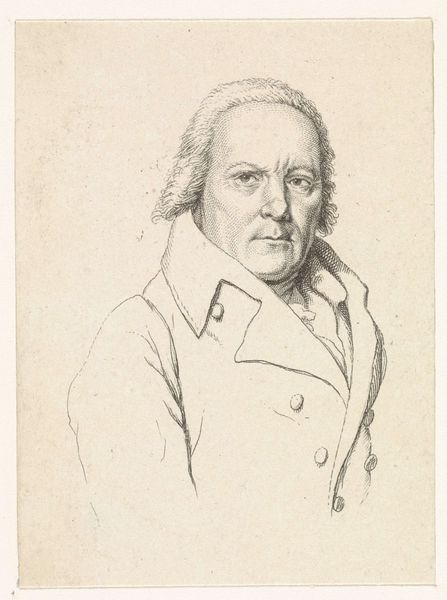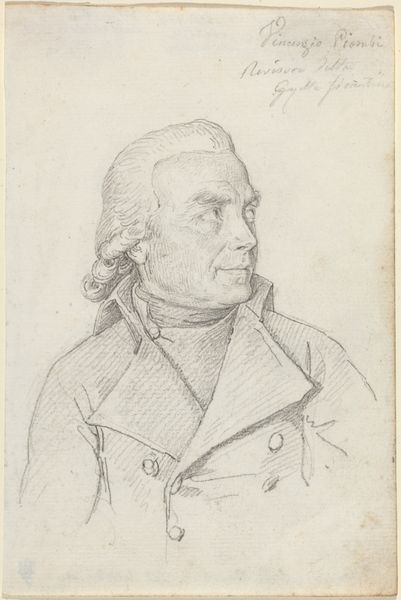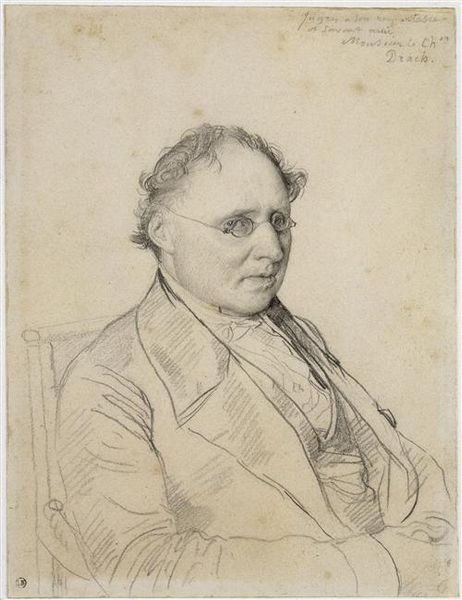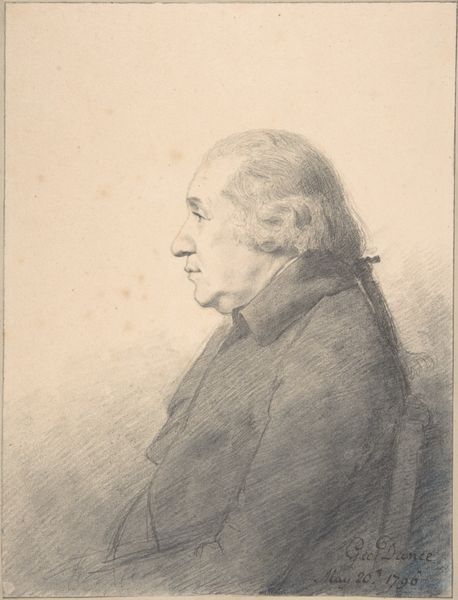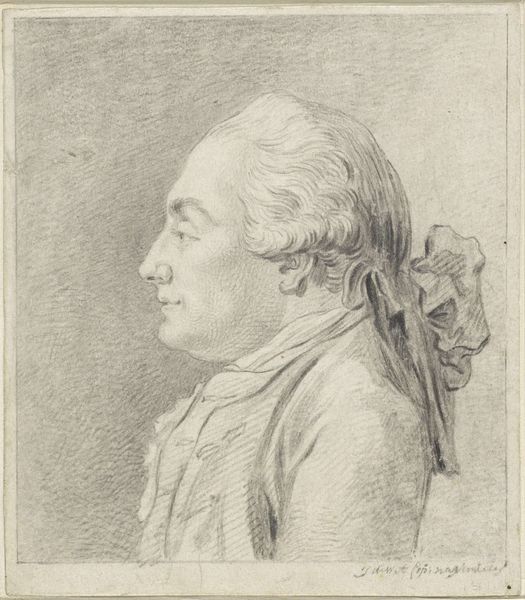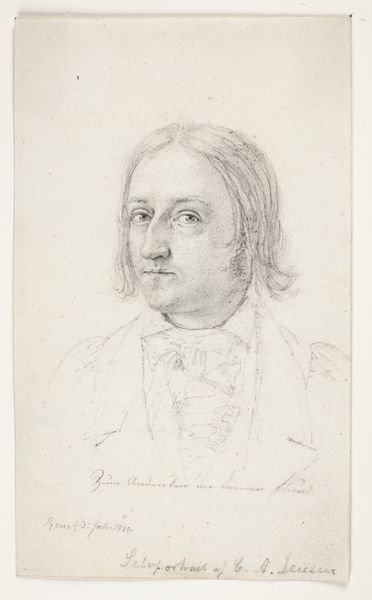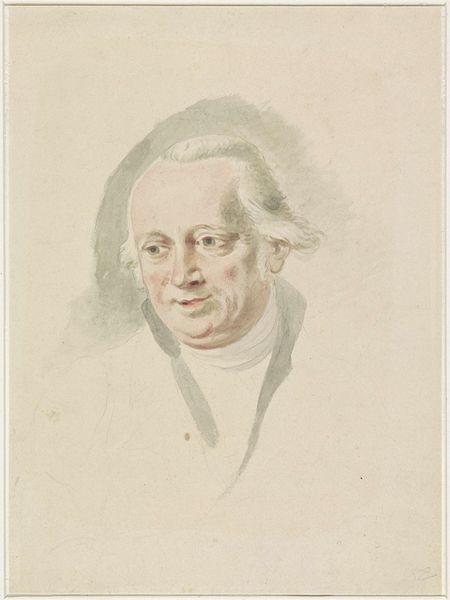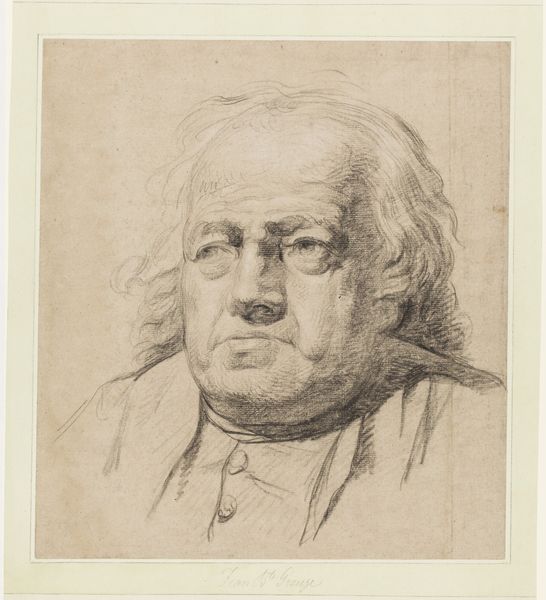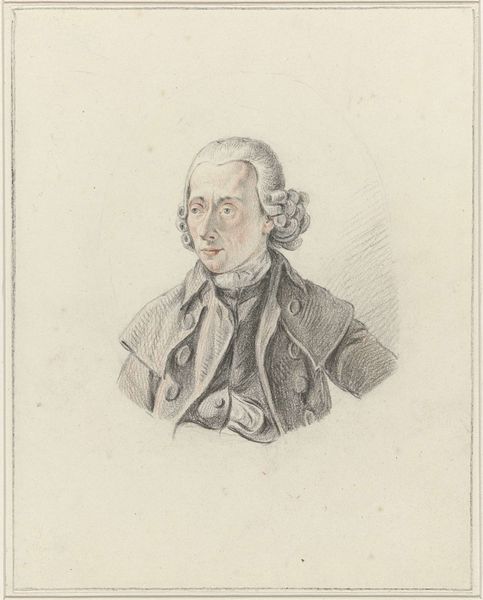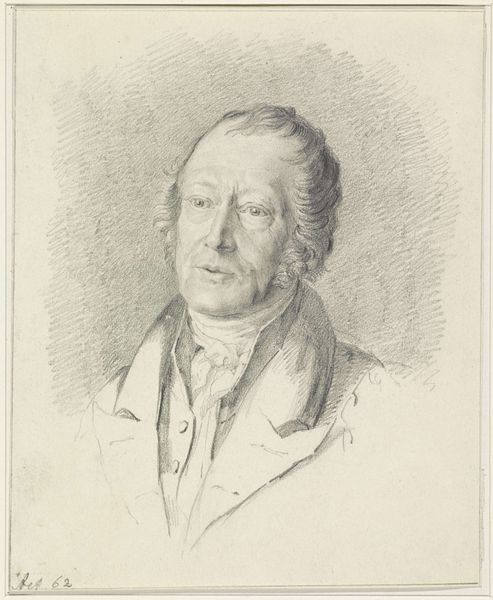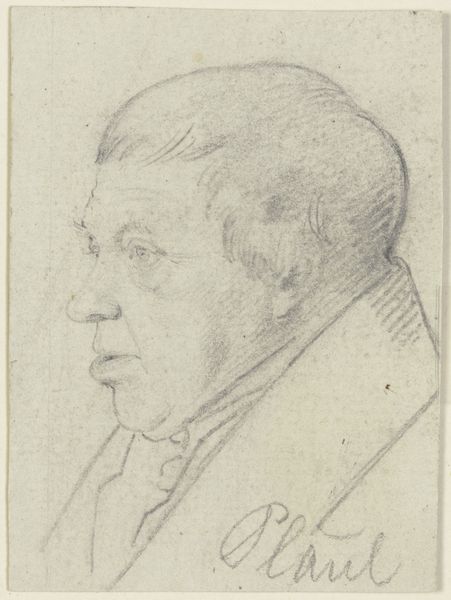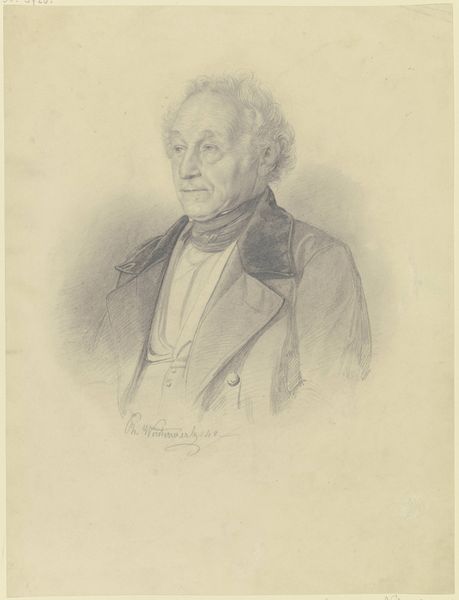
drawing, pencil
#
portrait
#
pencil drawn
#
drawing
#
neoclassicism
#
pencil sketch
#
figuration
#
pencil drawing
#
pencil
#
portrait drawing
#
realism
Dimensions: height 99 mm, width 77 mm
Copyright: Rijks Museum: Open Domain
Curator: Here we have Hendrik Willem Caspari’s "Portret van Cornelis Buys," a pencil drawing created in 1811. It currently resides in the collection of the Rijksmuseum. Editor: It’s immediately striking, isn’t it? Such simplicity in rendering, yet the figure’s presence is palpable. There is something very serious and melancholic about this man. Curator: Absolutely. Notice the medium: simple pencil on what appears to be laid paper. The marks are economical, almost utilitarian. It suggests a straightforward production, possibly a preparatory sketch, free from elaborate artifice, very typical of Neoclassicism and early Realism. Editor: His coat gives me an impression of someone important. Those prominent buttons carry significance. I'd even argue that the large collar around the neck is a symbol of formality and order – the way it frames his face directing us to analyze and understand his individual characteristics. Curator: You make an interesting point regarding those buttons. From a materialist perspective, even the choice of such seemingly small items says something. Metal, at that time, speaks of industrial process, production scale and expense of resources and labor required. And, in 1811, the Dutch economy would be affected by Napoleonic wars on resources, manufacture and global trade. Editor: It all adds layers to how we understand this man, doesn’t it? There's such a sense of introspection, and, knowing the turbulence of that historical period only emphasizes the sitter’s gravity, perhaps even concern. This artist captured more than just a likeness. He managed to translate an inner state. Curator: Perhaps even intentionally contrasting to opulent display we may see in preceding eras in history. By paring everything back, and by his choice of raw materials, Caspari brings an intense focus upon individual experience in the new republic struggling to be born, rejecting the excessive ornamentation of aristocracy. Editor: In a way, looking at it again, even the minimal approach feels so potent. The symbolism rests not in lavish embellishments but in the quiet revelation of the man himself, presented amidst those complicated material processes that you noted before, creating a sense of national pride for Dutch identity in his new, minimalist outfit. Curator: Well, looking at it this way gives this piece more depth than originally met by the eye. I find that truly compelling. Editor: Indeed. I leave this artwork now with the feeling that even understated portraiture holds tremendous depth when explored thoroughly through social contexts and symbols.
Comments
No comments
Be the first to comment and join the conversation on the ultimate creative platform.
